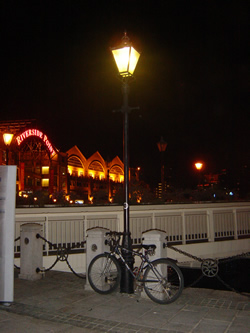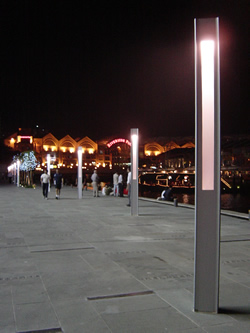Subject: Matthias, 26 years old creative director who is based primarily in Singapore
Young hotshot who secured a position in his present company, a multi-national advertising firm, 4 months before he graduated. That, was 16 months ago. Hardworking and full of drive and zest, he was instrumental in 2 successful pitches saw his company being awarded huge contracts. Just 2 months back, he was promoted to creative director. He aims to take over as head of the Singapore branch by the time he reaches 29, a feat if accomplished would make him the youngest person ever to head an international branch of this firm.
Recently, with his pay increase, he refurnished his room with a recliner and a flat-screen plasma TV. He also bought a walk-in wardrobe to replace his old closet and new imported shelves and computer table.
Every Saturday, he enjoys a nice night out at various Pubs around Singapore, savouring alcohol and making new friends. He dresses his best to impress, even though he really isn’t meeting anyone in particular. He enjoys the attention afforded to him. Once in a while, he will make attempts to chat with strangers too, no gender in particular. Occasionally, he gets recognised by former acquaintances or colleagues, and he indulges them in a conversation.
Matthias carries around with him, a name-card holder where he keeps the contacts of people he befriends at the pubs or throughout his course of work, most of the cards which he never took a second look ever since he kept them.
Wakeboarding, introduced to him recently by a casual drinking acquaintance is a sport which he enjoys as well. He loves the rush of the winds and waves hitting him as he makes turns and twists in the waters. Wakeboarding provides him with an adrenaline rush that his day-to-day work is unable to do so.
Physio
– Physical relaxation
– Intoxication
The recliner, the Saturday night alcohol. He indulges in physical comfort and the feeling of relaxation that the alcohol brings him.
Socio
– Shallow acquaintances
– Glamour
– Status
To him, everyone else is just a passing face and everything is like a passing phase. What gets him on is the moment of internal glee when someone recognises him or others talk greatly about him.
Psycho
– Stimulation
– Showy
He believes that packaging is everything. It is in his best interest to look the best and outshine others, to be at the centre of attention and have others admire him.
Ideo
– Go-getter
– Hedonist
He aspires to rise to the top of his work, to show others he is the best there is. Wakeboarding, more than just a sport to keep his body healthy, provides him with excitement and adrenaline rush. He enjoys the moment of doing the sport.
Products Benefits Specification
- Chic, glossy chrome coating
– Reflects a sense of sophistication in the user
- Slim design without antenna
– Doesn’t cause huge unsightly bulges when slipped into the pockets
- Flip-cover phone where the cover-piece flips up with the press of a button
– Showy mechanism that will grab attention
- Glossy-black plastic inner-surface
– Looks good but it may not necessarily be comfortable to be put against one’s face
- Simple chrome-plated numeric keypad with 2 additional buttons for menu navigation and calling
– Emphasises on the showiness of the buttons rather than the actual functions of them
- Supports text messaging, calling, event-reminders
– Not a high-utility phone, No special functions
- Slide-casing employed for changing of batteries
– Gives the look of a complete and seamless phone unlike the usual plain models with snap-on covers
- Requires a specially-customised charging stand to charge the phone batteries
– Designed to be a showpiece even when the phone is not in use
- Hands-free function is poorly designed as it involves the same slide-casing for the batteries to be left half-opened
– Not meant to be kept away from the view of others but instead used in its full glory next to a ear
- Slight almost-ineffective grooves to facilitate gripping
– Functionality of a proper grip sacrificed over the phone’s aesthetics (again)
- Dim white backlight by default, able to adjust brightness of it
– Provides just the right amount of illumination so that it does not come off as tacky
- Smooth-sounding MIDI ringtones packaged with the phone
– Crisp music to the ears, soothing and relaxing




